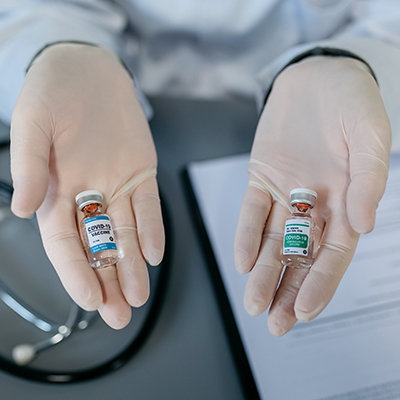January 11, 2021 -- Although innovation continues to occur at lightning fast speeds in the cell and gene therapy space, commercialization and manufacturing of these technologies is still playing catch-up. A group of investors and executives from across the industry discussed this issue in an on-demand session of the Biotech Showcase virtual event.
The cell and gene therapy industry is at a critical juncture. Landmark advances in gene editing are leading to the development of products that have therapeutic potential beyond what's been achieved with conventional medicine.
But the complexity of the technology creates challenges. Cell and gene therapy products are so complex and the technology so novel that the entire breadth of expertise required to manufacture the product cannot exist in a single organization.
Many companies are grappling with the decision to invest in in-house manufacturing capabilities or working with outside partners (contract development and manufacturing organizations; CDMOs) who already have the infrastructure to support their products. There are positives and negatives to each side of the decision.
For instance, Avrobio, an ex vivo lentiviral gene therapy company, is rapidly moving toward becoming a commercial-stage company. CEO Geoff MacKay explained that in the early days of the company, executives mapped out the value chain of elements required to produce their product to decide which chemistry, manufacturing, and controls (CMC) they wanted to own versus which aspects they thought partners or vendors could handle. They decided it was critical to develop their own high-quality vectors and be able to manufacture it themselves.
As a result, Avrobio now has its Plato platform, which can be automated for the production of lentiviral vectors. MacKay also noted that an added benefit of bringing manufacturing in-house is that the company can characterize the product early in development to get ahead of any requests that the U.S. Food and Drug Administration (FDA) might require for submission of a biologics license application.
The product is the process
From a venture capitalist perspective, Arjun Goyal, co-founder and managing director of Vida Ventures, said that his firm seeks to own the process of manufacturing biologics. This way, companies can explore all aspects of a technology to see if it applies to multiple modalities. The end goal must be to develop real drugs that can pass regulatory review, meet clinical benchmarks, and are scalable, he said.
From the product development side of things, Rachel Haurwitz, PhD, president and CEO of Caribou Biosciences, said that her company uses a blend of internal and external manufacturing processes. The company has its own process development team, but also has CDMO partners with the appropriate infrastructure to provide the essential components to create the final product.
Some products are commoditized, with many options on the market. These include recombinant CRISPR proteins and guide RNAs that can be easily contracted out for production. Alternatively, other aspects of manufacturing are bespoke and require such specific expertise and knowledge that the company is seeking to bring these services in house. These include viral vector manufacturing at scale and cell handling. The ability to characterize products at these stages represent a major gridlock in cell and gene therapy commercialization.
The manufacturing 'brain'
One of the most important components of successful manufacturing in any industry is human capital -- or the brains behind the process. It's crucial to build the right team, with the right industrial know-how and the passion to develop novel technologies, according to all members of the panel.
The cell and gene therapy industry is in a bottlenecked state where talent is constrained and seamless commercialization is still not possible. The demand for talent in the manufacturing industry is extremely high, according to Rachelle Jacques, CEO of Enzyvant.
And the ability of companies to secure or work with a successful team is further limited by the CDMO environment, which she says creates a different type of performance among its employees, where employees are often generalists working on many different programs. This is in stark contrast to what companies really need, which are professionals who understand the unique needs and intricacies of their products.
As a result of high demand, there are significant challenges with turnover, according to Haurwitz. This can have a significant effect on the consistency of manufacturing of any given product at a CDMO, an outcome that is definitely not desirable for product companies.
Ultimately, an organization needs to match its needs with the specific motivations of individuals and teams, said Haurwitz. Caribou specifically looks for job candidates who want to be problem solvers and who understand the technology underlying the company's products and how it can be commercialized.
What is the future of cell and gene therapy manufacturing?
The panel offered several predictions as to what the industry can expect to become commonplace for the manufacture of cell and gene therapy products in the future.
First, the next innovation that is necessary is the production of stable cell lines, according to MacKay. This idea was supported by Jak Knowles, CEO of Metagenomi, who said that the production of a consistently reliable and reproducible product is absolutely necessary for pushing technologies toward commercialization.
Knowles also suggested that companies will eventually move toward nonviral genetic medicines, where companies integrate gene editing technologies and therapeutic development expertise to produce products for a number of modalities. Adding to this concept, Goyal also noted that with genetic medicine companies, suites of technologies such as capsid engineering and synthetic promoter technologies can be easily incorporated into products as they become available.
Development and integration of these technologies will be essential for cell and gene therapy developers moving forward to achieve commercialization of their products. The ability of companies to optimize these platform technologies will allow for greater partnerships in the industry, accelerate product commercialization, and bring cell and gene therapy products to the patients who need them.
Do you have a unique perspective on your research related to bioprocessing or cell and gene therapy development? Contact the editor today to learn more.
Copyright © 2021 scienceboard.net









